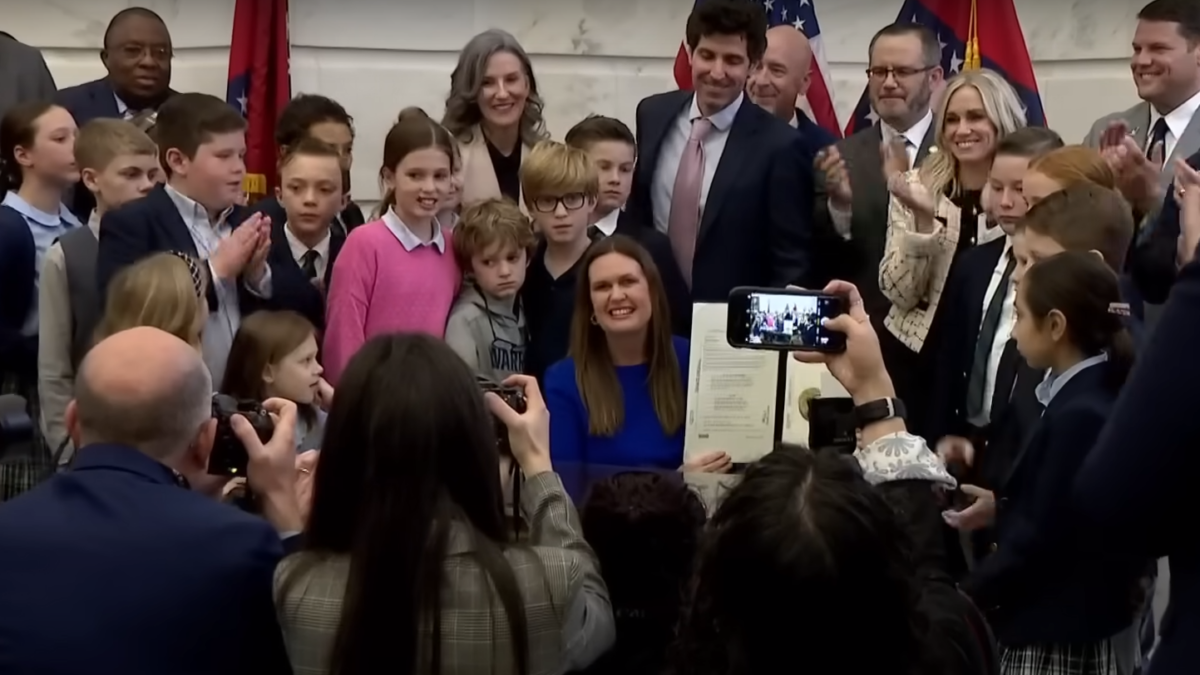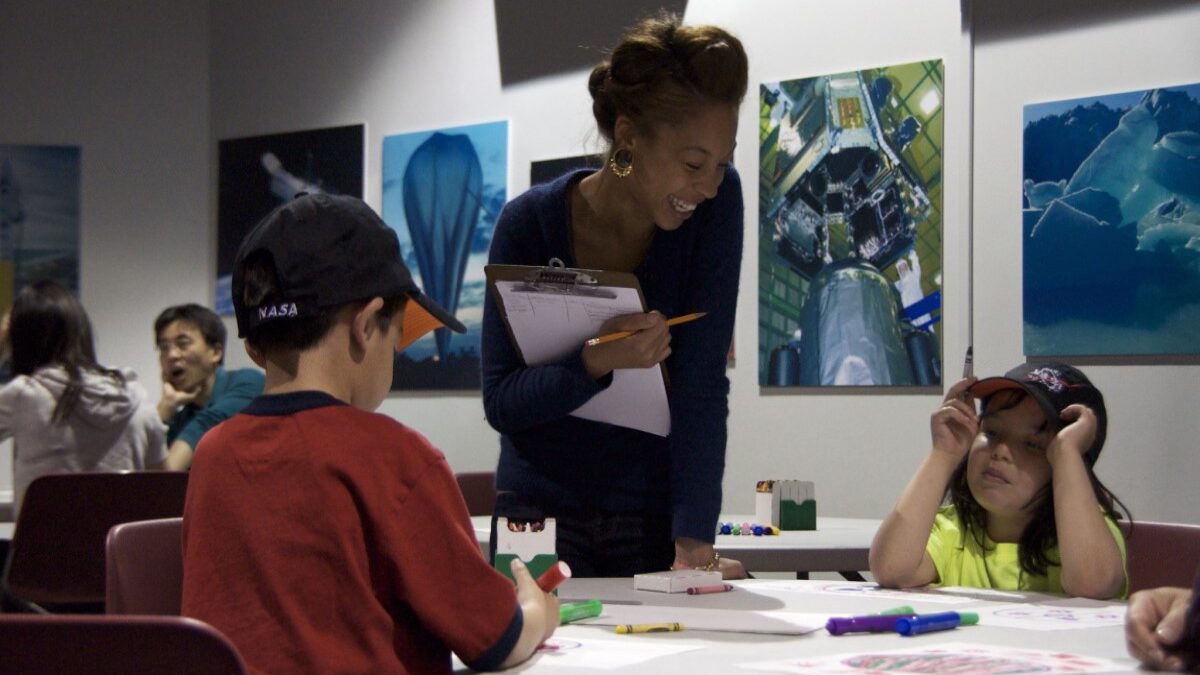
As kids head back to school this fall, parents in Arizona and Florida are able to customize their experience thanks to an innovative tool: education savings accounts. After decades of government centralization of education, parent-controlled ESAs are ushering in a new era of choice and accountability in education.
In an effort to improve education outcomes and narrow achievement gaps, the federal government has progressively centralized education through $2 trillion in federal education spending, dozens of grant programs, and thousands of regulations. But that effort has largely failed to deliver on the promise to “bridge the gap between helplessness and hope,” as President Lyndon B. Johnson put it when he signed the 1965 Elementary and Secondary Education Act (ESEA). No Child Left Behind, ESEA’s seventh iteration, further bureaucratized this effort.
Student achievement in math and reading is no better than it was in the 1970s, according to the National Assessment of Educational Progress (NAEP). American students are still performing in the middle of the pack compared to their international peers on the Programme for International Student Assessment (PISA). Recent NAEP data from the U.S. Department of Education show that nearly one in three fourth-graders cannot read at a basic level, only 26 percent of high-school seniors are proficient in math, and just 38 percent are proficient in reading.
Children Start With Parents
While it has failed to improve education outcomes, centralizing education has accomplished one thing: It has placed a chasm between those closest to the student—parents and teachers—and decisions about local school policy. Decision-making by far-away bureaucrats in Washington through efforts such as Common Core national standards has exacerbated the problem.
As Providence College Professor Anthony Esolen writes, the family, by nature, has the primary responsibility for a child’s education. They then delegate some of that authority to a school teacher. The school is “a deputy of the family.” According to Esolen, a school “has no authority of its own apart from what the employers, the parents, delegate to it.”
By extension, accountability in education should begin with parents and then, at their direction, move to teachers and other education service providers.
The school-choice movement, which began in earnest in the early 1990s, building on the conceptual foundation economist Milton Friedman established in 1955, seeks to restore education decision-making back to parents. It is a movement driven by the conviction that every child is unique and has unique learning needs.
The Education Debit Card
Private school-choice options operate in states as vouchers, tuition tax credits, and now, education savings account (ESAs). ESAs, hatched in Arizona in 2011, are perhaps the most innovative of existing school-choice programs. A refinement of Friedman’s original school voucher idea, ESAs empower parents with the ability to direct 90 percent of what the state would have spent on their child in public school toward a variety of education options, fully customizing their child’s education. In Arizona, for non-special needs children, the average amount deposited is approximately $3,000 per child per year. For special-needs children, the account size ranges from $10,400 to $26,000, depending on the severity of the child’s disability.
ESAs represent “School Choice 2.0”—the next generation of school choice. ESA funds, which are distributed to accounts quarterly, are loaded onto a restricted-use “debit card,” allowing parents to direct funds deposited into their child’s account toward any combination of approved education services and products. These include private tuition, tutoring, curricula, textbooks, individual public-school courses, online learning, and education therapies. Parents can even roll unused funds into a college savings account.
ESAs better target resources, empower parents, and tailor a student’s learning specifically to his needs—while enabling families to save for college. ESAs restore accountability to its proper place by shifting responsibility in education decision-making back to the students’ primary providers: the parents.
Two Pioneering States
In Arizona, the accounts are known as Empowerment Scholarship Accounts. And they are true to their name: they empower parents with the freedom to fully customize their child’s education.
Arizona’s program is so popular that eligibility has been expanded three times since 2011. Now incoming kindergarteners and children with special needs, from underperforming schools, from active-duty military families, in foster care, and of fallen soldiers are eligible for the accounts.
And other states are noticing.
This June, Florida became the second state to enact an ESA, which Floridians call Personal Learning Scholarship Accounts (PLSAs). Just two months into operation, Florida’s PLSA program has more than 3,000 applicants and has distributed 641 scholarships.
Ten-year-old Jordan Visser is an ESA recipient in Arizona. Jordan’s parents, Kathy and Christo, spent years fighting within the public school system, trying to get Jordan, who has cerebral palsy, the care he needs. They even hired a legal advocate to fight battles over the school district to provide what Jordan was supposed to receive by law. As Kathy recounts, the family was spending the money that could have been used toward Jordan’s therapy on legal expenses instead.
But that changed with the ESA.
Now Kathy and Christo can use Jordan’s savings account to pay for physical and occupational therapies, curricula, and private tutoring. Jordan is flourishing with his new schooling environment, and it’s all because his parents are now empowered to direct his education funds toward the best learning options for him.
“I’m seeing children that are blossoming, that were not learning in the traditional system, and to me that’s accountability,” says Kathy. “We need to look at ways to show that accountability. There is nobody that is going to be more accountable to that child than the parent.”
Small, But Growing, Innovation
Like vouchers, ESAs beckon a new competitive marketplace of education options, placing the needs of the consumer—the student—first. Because of its flexible financing model, which enables customized learning, ESAs are fitting twenty-first-century innovations in education.
The school choice movement is booming. As of 2014, there are 41 private school-choice programs in 24 states and the District of Columbia. More than 300,000 students currently benefit from private school-choice options. According to the Friedman Foundation for Educational Choice’s 2014 Schooling in America Survey, a “solid majority” of Americans support education savings accounts.
In just its first year of operation, 34 percent of Arizona families chose to use their ESA funds to customize their child’s education, using it for a variety of education expenses. (The others mostly used the funds for private tuition.) This suggests that when parents are given the ability to tailor their child’s education to their child’s individual needs, they take the opportunity. In 2012, 71 percent of families using ESAs in Arizona reported being “very satisfied” with their savings account.
America has reached a crossroads in education. One path continues the last half-century of centralization, which has not improved education outcomes and has distanced those nearest students. The other path, however, provides options and holds the potential to dramatically increase opportunities for students. The path paved by school choice, and in particular education savings accounts, restores parent direction of education and enables families to access more nimble, responsive education options.
Children across America are gathering their pencils and books, putting on their backpacks, and preparing from a new school year. This time of year is always filled with a sense of opportunity and new beginnings. That’s particularly true now in Arizona and Florida, where children can expand their educational opportunities, thanks to ESAs. Their parents are in the driver’s seat—where they belong.









